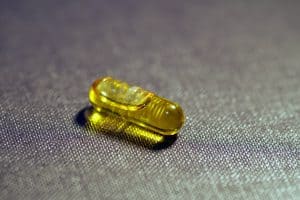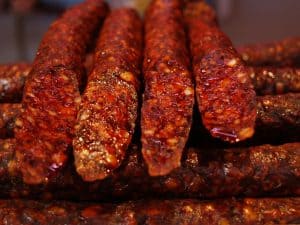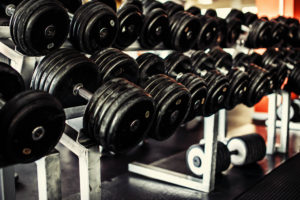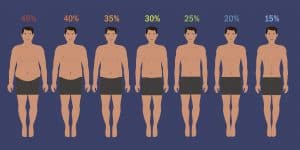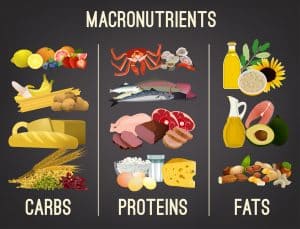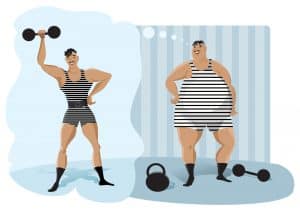During your bodybuilding journey, you will be tormented by one main issue. Every time you appear to be making progress—you incur an injury—putting your gym attendance on hold.
I’ve been there. And I knew that unless I solved this predicament—my gains weren’t going to hit my lofty targets.
This article details the most common injuries in bodybuilding, suggestions for their prevention, and how to recover quickly should they occur.
Why Are Injuries in Bodybuilding Common?
Bodybuilding, or more specifically resistance training, is ironically designed to incur injuries.
Working the muscles past their comfort zone leads to micro-tears in the muscle fibers. The body, through protein synthesis, repairs, and rebuilds these small traumas.
The result—muscles return larger and stronger.
However, while we welcome these small injuries in bodybuilding—anything that puts you out of action or induces pain is to be avoided.
The issue is—as a bodybuilder, at some point, you will become injured.
The sport necessitates you to apply heavy loads to a relatively small area. This exerts significant forces on the muscles and joints—which in many cases can lead to damage.
Here are the facts:
Nearly half of all bodybuilders experience injury in any twelve month period. For those who pursue the particular niche of powerlifting—this escalates to a massive 87 percent.
However, being aware of the most common injuries in bodybuilding means you can take the necessary precautions.
Because, if you’re out with injury—that means no gains.
The Most Common Injuries in Bodybuilding
Whether a seasoned lifter or a gym newbie—here are the most common injuries in bodybuilding you’re likely to experience.
Shoulder Injury:
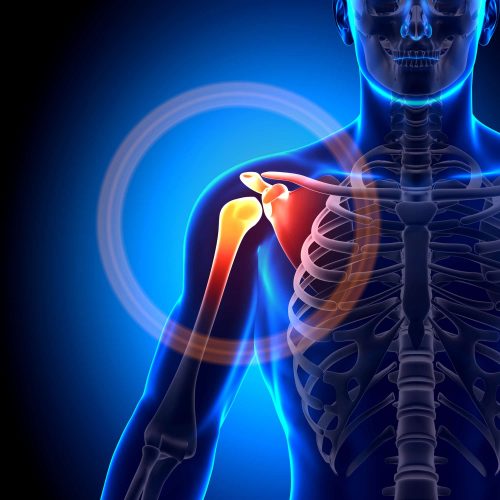
Research shows that the shoulder (together with the elbow) is the part of the body most likely to be injured through weightlifting.
Here’s why:
The shoulder is a tightly fitting ball-and-socket joint. The humerus (upper arm), tendons and bursa (fluid-filled sacs) move backward and forward inside a relatively small bone archway (the coracoacromial arch).
When you raise your arms during lifting—this archway reduces in size, which can squeeze the tendons and lead to inflammation. Restricted movement and pain are the results.
Additionally, one of the most common injuries in bodybuilding is a SLAP tear (Superior Labrum Anterior and Posterior), that is felt in the front deltoid. This occurs when the shoulder experiences heavily repetitive overhead motions.
When you combine this stress with free weights—it can create small lesions in the labrum (the shoulder cartilage).
How to Avoid a Shoulder Injury:
Always warm up the back, shoulders, and rotator cuffs prior to exercising this area. Furthermore, do not go super heavy on overhead movements, like barbell or dumbbell presses.
Elbow Tendonitis:
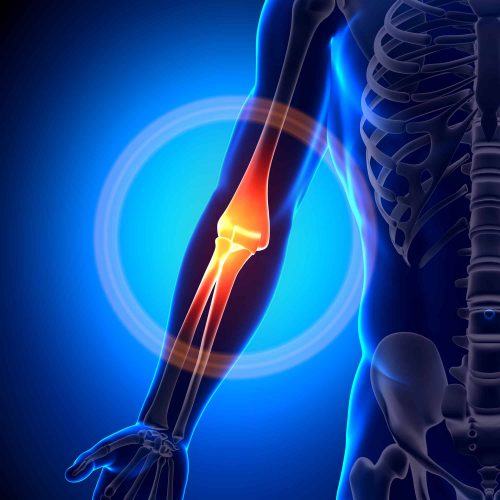
Together with a shoulder strain, it’s one of the most common injuries in bodybuilding.
Typically, this falls into one of three categories.
- Medial epicondylitis (golfer’s elbow)—triggered by overworking the wrist muscle flexors (during pulling exercises).
- Lateral epicondylitis (tennis elbow)—tension and damage caused to the forearm muscles—usually incurred through repetitive gripping of a barbell or dumbbells.
- Triceps tendonitis—the least likely of all bodybuilding elbow issues, resulting from over-extension (skull crushers).
Depending on the particular form of tendonitis—its presence is felt by tightness on either the inside or outside of the elbow. Particularly noticeable during movement. This can bring on pain when you form your hand into a clenched fist or when you perform bicep curls.
Although you may feel soreness around the elbow area—its cause is usually damage to the muscles which extend down to it from the wrist or upper arm.
How to Avoid Elbow Tendonitis:
If your session includes intense gripping exercises such as a Farmer’s Walk or fat-grip curl—perform these at the beginning of the workout, not the end.
Additionally, non-weight exercises such as push-ups or crawls increase wrist flexion—reducing the likelihood of damage.
Remember, always warm up well before your arm workout sessions.
You also might want to use elbow compression sleeves.
Knee Injury:
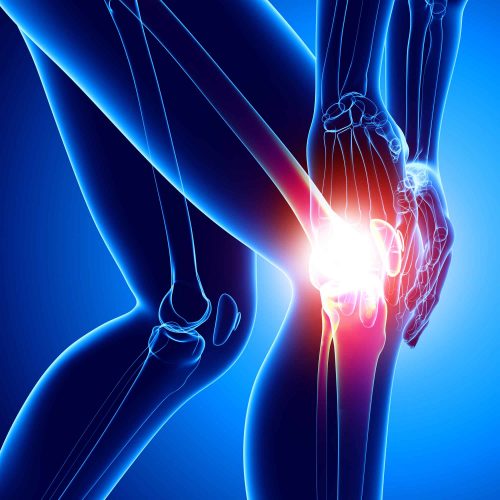
If you’ve ever slightly misjudged stepping off a sidewalk—you know how easy it is to strain the knee.
The issue is, the knee is inherently restrictive.
As a hinge joint, it can only flex and extend. It doesn’t allow for the free-range of abduction, circumduction, adduction, and rotation of ball-and-socket joints.
This restricted scope of movement means that if someone pushes their knee outside its normal range—accidentally or otherwise—damage occurs.
It’s one of the most common injuries in bodybuilding for those people who frequently perform lunge or squat exercises. Poor technique can lead to patellar tendonitis, ACL (anterior cruciate ligament) tears, and bursitis.
Injury can be indicated by a sharp pain felt along the knee joint, just below the kneecap, or on the underside of the thighs.
How to Avoid Knee Injury:
It’s a generally held belief that deep squats (where the buttocks pass below knee level) are likely to cause injury. And hence, it should be avoided.
However, recent research indicates that this is incorrect. What’s more important is the relative position of the knee to the foot.
Ideally, try to ensure your knee remains in line with your second toe—and, where possible, don’t move the knee past the toe line.
Knee compression sleeves go along way, too.
Herniated Disc:
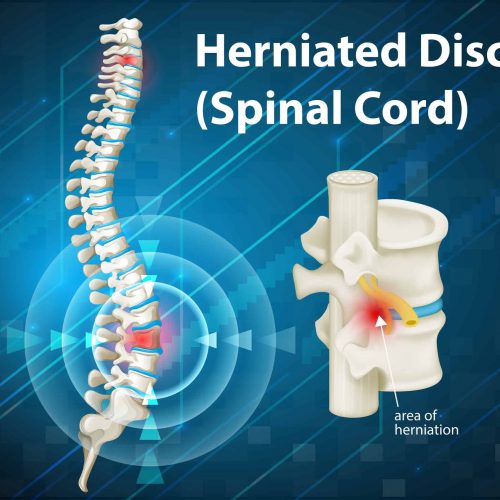
Poor technique—whether raising a barbell or picking up your kids—can cause a disc herniation. Another one of the most common injuries in bodybuilding.
The vertebrae of the spine each have small rubber-like discs between them—ensuring the spinal bones don’t rub together.
Stress on the spine, combined with poor posture, can lead to these discs being squeezed and pushed out into the spinal column.
The outcome is back pain or numbness and weakness in one arm or leg. Furthermore, the older we become, the more likely this injury is to occur.
How to Avoid a Herniated Disc:
Stand up straight, look forward, and push your shoulders back. If you use your hand to feel your spine, you’ll notice that it curves inward behind the lower ribs—then slightly bends back out again.
You should maintain this back shape throughout your lifts and presses. Hence, when going into a deadlift or a squat, make a mental note to keep this position—with no forward rotation.
It’s not just about pulling exercises either. In pushing, such as the bench press, your back should remain arched. Only the upper section of the spine (below your pecs) should be on the bench.
Lower Back Injury:
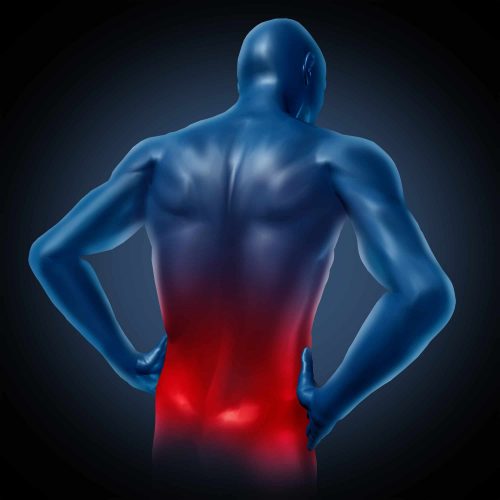
The lumbar area (lower back) is most frequently injured by bodybuilders who focus their sets on explosive and heavy powerlifting movements.
However, the lumbar region provides support and works as a secondary muscle provider in numerous other exercises. Meaning that even under seemingly unrelated sets—such as dumbbell curls—the lower back can become injured.
Overworking this area, or incorrect technique can induce small tears in the back extensor muscles (the erector spinae). This can range from a general feeling of stiffness through to intense shooting pain down the back of the thighs.
How to Avoid Lower Back Injury:
If you’re a powerlifter, it’s advisable to use a weightlifting belt during training. These useful braces provide additional core stability—lowering the load on the back.
However, if you’re not pushing out immense loads—they’re not required. Concentrate on ensuring that you’ve completely warmed up before exercising—and use the correct spine position as mentioned for herniated discs.
Recovery Tips
As mentioned, if you’re hitting the gym regularly—injuries will occur.
But, instead of feeling sorry for yourself—be proactive! Here’s my four-point plan to get yourself back to gym-ready fitness again.
1
Accept Your Injury
Think of it as a challenge that all serious lifters experience—and being a dedicated athlete, you can scale this minor hurdle.
Equally, face facts. You are going to lose some mass. Don’t try and work through the pain and push out 300 pounds with an injured back. All that will do is exacerbate the problem and extend recovery time.
2
Don't Be Lazy
This isn’t a time to forego the gym entirely, sit back on the sofa, and contemplate how unfortunate you are.
You can still work out. Just don’t follow your regular training routine on the injured muscle. If you’ve damaged your knee, then work the upper body instead.
Additionally, begin to exercise the injured area—but without any resistance. Research shows that moving injured joints and muscles reduces recovery time.
3
Slow and Steady
After a couple of weeks, when inflammation has subsided, and you’re pain-free—begin to use weights on the affected area again.
However, under no circumstances, try to lift the same heavy-iron that you were pushing out before your injury.
Your muscle or joint is still repairing. Training will improve recovery but not if you push it too hard. Furthermore, after two weeks without working that muscle, your strength will have decreased.
Instead, start with a lighter weight, at least 50 percent lighter than your normal set load. Then every three days, gradually increase the plates.
4
Eat for Success
Recovering from injuries in bodybuilding isn’t all about training and mental attitude. One of the most under-used tools is nutrition—food that fuels repair and regrowth.
It’s so essential I’ve dedicated the next section of this article solely to this aspect.
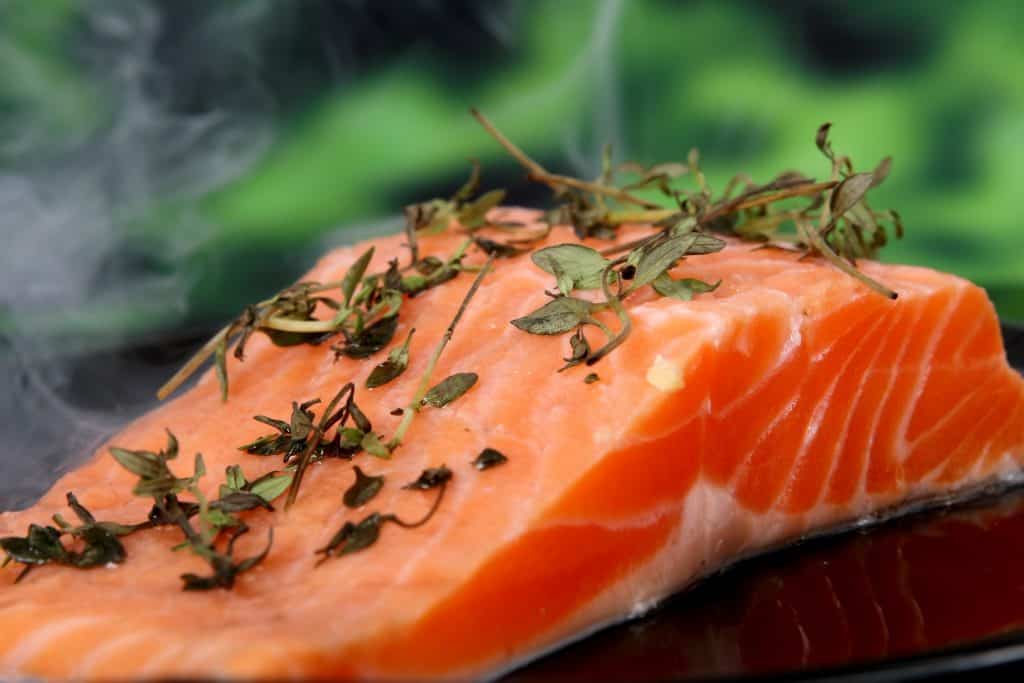
Nutrition During the Recovery Phase
One of the most common mistakes after incurring a bodybuilding injury is to drop the calories drastically. Many lifters worry that as they may be working out less—the fat will pile on.
Studies show that injury elevates the metabolism—as the body works hard to rebuild and repair. Hence, you should consume sufficient calories to fuel this recovery process.
Ideally, don’t drop your regular energy intake by more than 10 percent to ensure adequate reserves.
Yet, recovering isn’t merely about loading the body with calories. Selecting the perfect nutritional foods can speed up your rehabilitation.
– Fats
You’re most likely aware that maintaining a good omega-6 to omega-3 balance is essential for health.
However, during recovery, it’s not harmful to elevate your omega-3 intake for a short period.
Research shows that omega-3s actively lower inflammation—alleviating pain and shortening recuperation time.
Look to include foods such as:
- Fatty fish (salmon, mackerel, and tuna).
- Seeds and nuts.
- Plant-based oils (soybean, canola, and flaxseed).
- Omega-3 fortified foodstuffs (often yogurt, eggs, and juices).
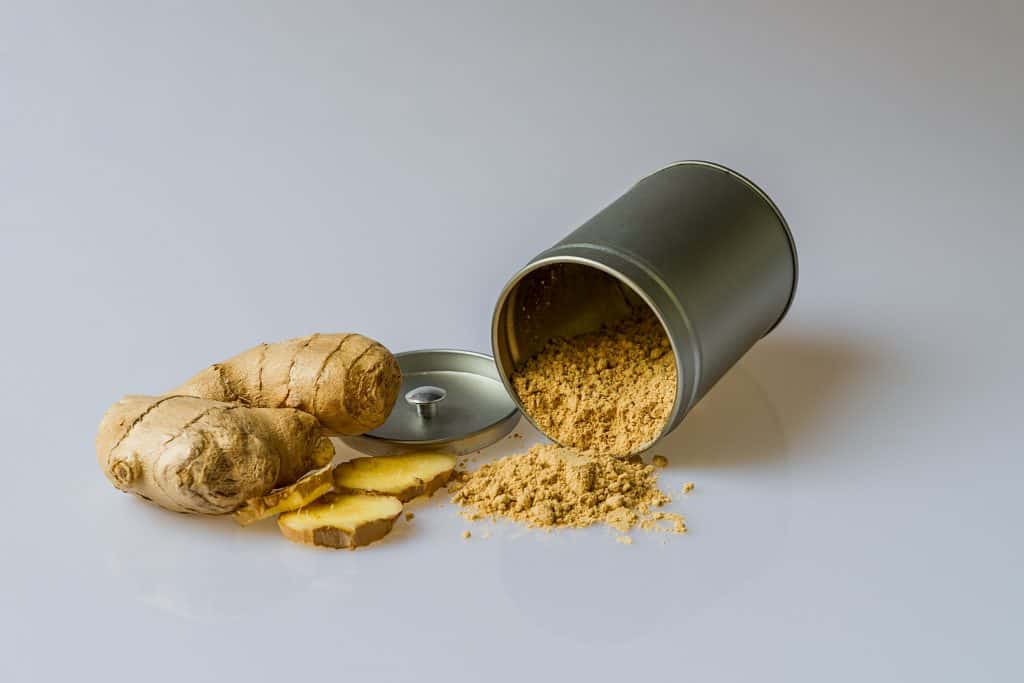
– Herbs and Plants
Nature produces some very effective anti-inflammatories in the form of plants. Try to include these in your recovery diet:
Garlic (Allium Sativum)
This bulb is a powerhouse of health benefits—being able to boost the immune system and protect against free radicals.
Most importantly, for those suffering from injury, it can reduce inflammation and stimulate macrophages (cells that protect the body).
While you can obtain the benefits by eating this tasty food—you’re going to need a lot. More convenient is supplementing with garlic extract available in pill form. I recommend around 1000 mg per day.
Turmeric
The chemical curcumin, found in turmeric, has the proven ability to lower inflammation. One option is to add this spice to your favorite dishes.
However, if you’re not particularly keen on its flavor—turmeric extract is available in capsule form.
Pineapple
This fruit contains bromelain—an enzyme which digests protein. Studies have shown that within human physiology, it can both prevent blood clots and reduce swelling.
When recovering, a dose of 1000 mg per day will be of most benefit.
– Macronutrients
Hopefully, you’re already watching your macro intake.
The most important of these nutrients for injury recovery is protein—the building blocks of muscles, tendons, and ligaments.
The recommended intake for the average person is 0.8 grams of protein per kilogram of body weight (or 0.5 grams per 1 pound of body weight). However, most bodybuilders will be hitting around 2-4 grams per kilo anyway (1-2 grams per 1 pound of body weight)—an ideal quantity for muscle repair.
Hence, during rehabilitation phases—don’t neglect this aspect of your training regime. Continue to use your current protein supplements or meals to optimize recovery.
The two remaining macros, fats, and carbohydrates are of less importance. We’ve already seen above that omega-3 fatty acids specifically are beneficial—but there’s no requirement to elevate overall fat intake.
the most common injuries in bodybuilding - Summary
Following the prevention tips earlier in this article will reduce the chance of injuries commonly occurring in bodybuilding.
But, from time to time—they will still happen.
The secret is not to become down—but instead, face this challenge head-on.
A combination of mental focus, progressive exercise, and nutrition will vastly increase the speed of your recuperation. Allowing you to hit the gym again sooner and obtain the physique you deserve.




